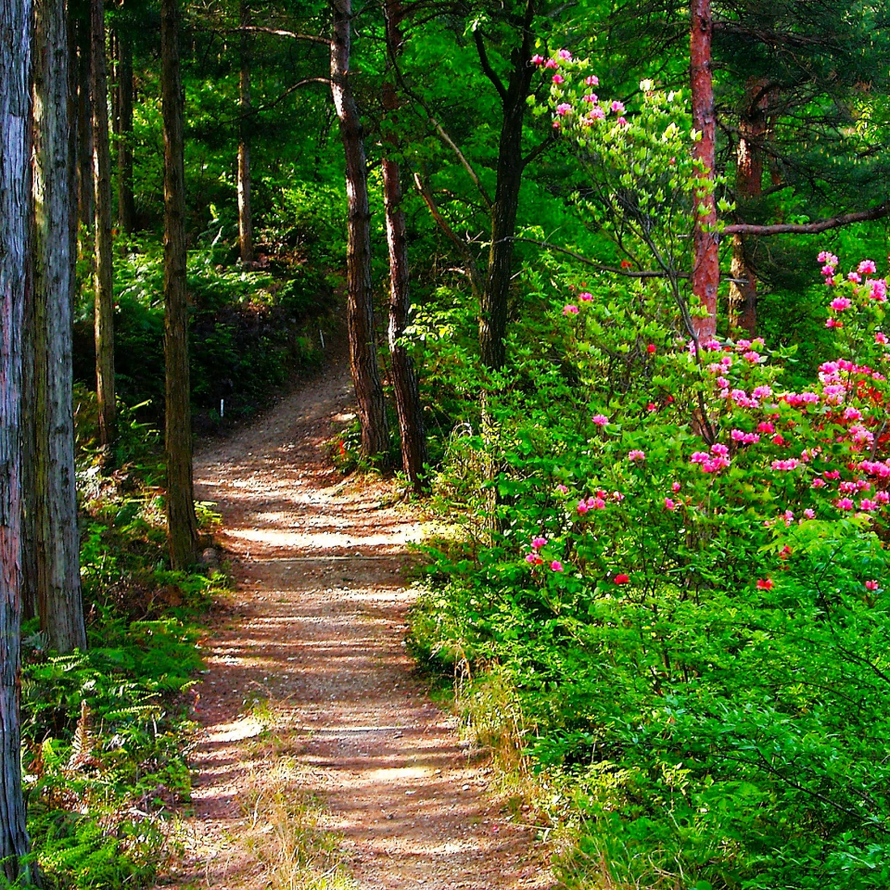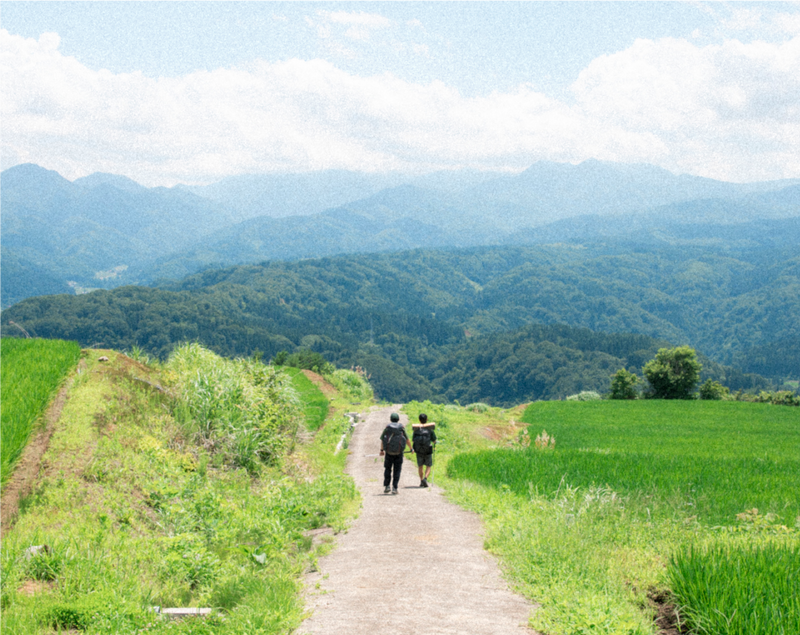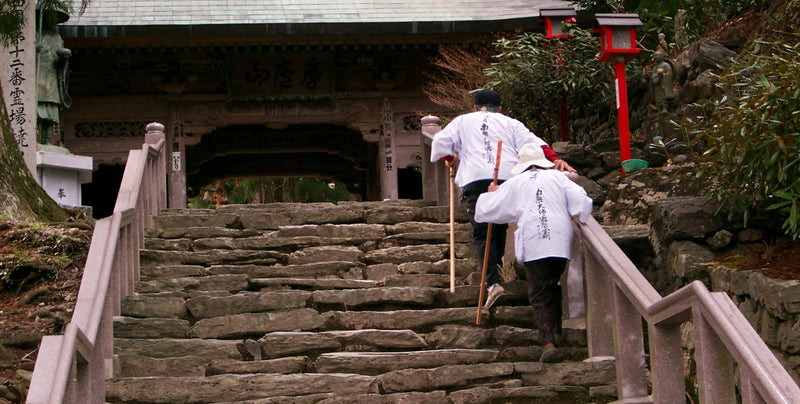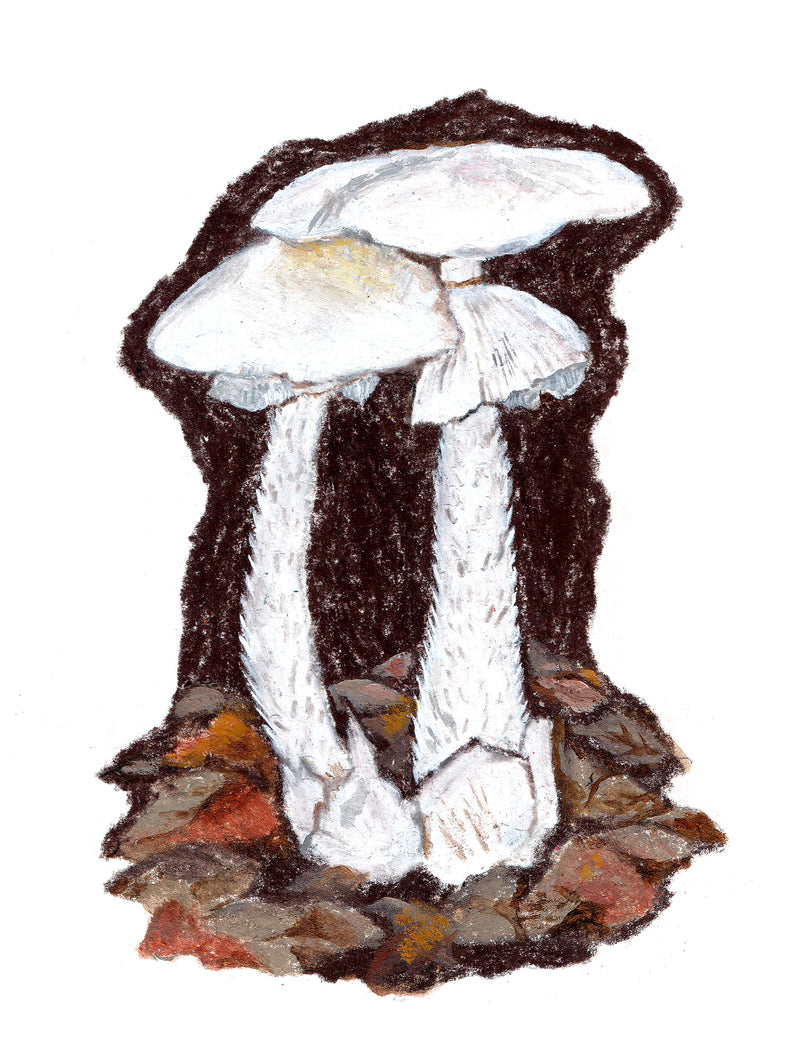88 PLACES IN SHIKOKU
Chapter 6
Text:Suzuki Yusuke
Edit:Suzuki Yusuke
88 PLACES IN SHIKOKU
Even a pilgrimage is a trail.
When you think of long trails as walking long distances, one of the most famous long trails in Japan is the pilgrimage. There are landscapes and interactions that can only be encountered by those who have simply continued walking the approximately 1,400 km route. I would like to go on a pilgrimage to train my mind and body and face myself.

PROFILE
Robert Sibley

He is a senior writer for the Ottawa Citizen and professor of political science at Carleton University. He completed the pilgrimage on foot in the spring of 2005 and wrote a series of articles for the Ottawa Citizen titled “The Way of Shikoku,” which was published in 2013 as “The Way of the 88 Temples – Journeys on the Shikoku Pilgrimage.”
-
 These are some of the routes and scenery that Robert actually walked and took his photo along. As a foreigner, Robert says that experiencing the unique Japanese nature left a lasting impression on him.
These are some of the routes and scenery that Robert actually walked and took his photo along. As a foreigner, Robert says that experiencing the unique Japanese nature left a lasting impression on him.
-

Just walk 1,400km through the 88 temples of Shikoku.
Let's turn back the clock about 1,200 years to Shikoku, where Kobo Daishi Kukai is said to have practiced asceticism and founded the "Shikoku 88 Temple Pilgrimage."
Pilgrimage to the 88 temples and other sites that are the remains of these temples is called 'Ohenro'.
The pilgrimage literally spans the four prefectures of Shikoku: Tokushima, Kochi, Ehime, and Kagawa. Walking the entire route is called a "through walk." The total distance is about 1,400 km. It is said to take an adult male about 40 to 60 days. Many people walk in casual clothes, but when they hear the word "pilgrimage," many will imagine a person wearing a white robe, a Buddhist monk's robe, and a kongo staff.
While many people use public transportation such as cars and bicycles to complete the pilgrimage, those who choose to do it the whole way are in the minority. Furthermore, while it is said that the number of people doing the pilgrimage itself has been decreasing in recent years, the number of foreigners doing the pilgrimage the whole way is increasing, and data shows that they now make up more than 40% of the total.
Robert Sibley was one of those who completed the entire pilgrimage in the spring of 2005. He listened to Japanese radio from a young age in Canada and studied Japanese literature and history in earnest at university. In 2000, he walked the Camino de Santiago, a Christian pilgrimage route, and became fascinated with long trails. It was natural and inevitable that he would choose the pilgrimage as the destination of his next long journey.
"I have been fascinated by Japan for a long time, and it began when I was a boy living in Inuvik, a small community on the Mackenzie River above the Arctic Circle. In the late 1950s, there were no televisions or radios in that polar region, so my father built me a simple crystal radio, which was my introduction to the world. On rare occasions, I would be able to receive radio broadcasts in Japanese, and I was amazed to be able to hear the voices of people in Japan from so far away, but at the same time, I wanted to know where Japan was.
Reading works by Yukio Mishima, Soseki Natsume, Yasunari Kawabata, Kenzaburo Oe and others at university, and studying Japanese history, deepened my interest in Japan and even tried Zen meditation. Needless to say, these experiences prepared me for my eventual pilgrimage.
-
 Tsumashira Daimyojin is a deity said to grant good harvests, prosperity in business, long life, and good health. There is also the "Kukai Walk", the only pilgrimage route that remains exactly as it was when Kobo Daishi walked it 1,200 years ago.
Tsumashira Daimyojin is a deity said to grant good harvests, prosperity in business, long life, and good health. There is also the "Kukai Walk", the only pilgrimage route that remains exactly as it was when Kobo Daishi walked it 1,200 years ago.
-

The beauty and harshness of nature, and the kindness of humans.
The pilgrimage has a culture called "settai" (entertainment), based on the idea that pilgrims are walking together with Kobo Daishi. Not only are there hospitality centers and zen-yadoya (restaurants) run by local communities and individuals in various places that provide lodging for free, but ordinary citizens also call out to pilgrims and offer them food or let them rest in their homes. This was a very big event for Robert Sibley, a foreigner, during his experience of the pilgrimage.
"I met kind and helpful people (hairdressers, postal workers, etc.), and although they were surprised to see a foreign pilgrim, many of them went out of their way to provide hospitality. And at the end of the day, I enjoyed a cold beer and a hot bath."
Walk through the lush valleys of Shikoku, tread paths carved by countless feet over the centuries, and even stand on mountain ridges, where a panorama of sea, sky and earth unfolds before your eyes. Experience the tranquility and solitude of a sunlit bamboo forest, walk through lush rice and lotus fields, relax on a beach that seems to go on forever, or climb a windswept promontory to gaze upon the foaming rocks far below. It's only natural that a walk through Japan's beautiful landscapes will move you, regardless of your age or nationality.
The same was true for Robert Sibley, who said that the best experience he had was the moment he felt the silence and tranquility surrounded by trees in the mountains. After walking the pilgrimage, Robert Sibley, who published "The Way of the 88 Temples - Journeys on the Shikoku Pilgrimage-", wrote about that moment in his book:
"I walked the Shikoku Pilgrimage for over six weeks. I couldn't believe that I had walked such a long distance and finally saw the end in sight. Naturally, the pilgrimage had become the center of my life, and walking 20-30 kilometers every day had an effect not only on the body but also on the mind. With the scenery, the weather, the birds singing and the prayers, my mind slowly began to change. Now I could focus on more important things.
That day was no different. I was lost geographically, but also emotionally. I walked among the scent of damp cedars, blue wisteria, azaleas, violets, sunlit trees, and paths echoing with the song of nightingales. But the real gift of the day was the journey of the heart. As my body was sweating and climbing over rocks, I felt like my soul was floating and looking at myself from a bird's eye view. Memories of the past six weeks were replayed in my head, and I felt a distance from my original life in Canada. At that moment, my heart became that of a true pilgrim.
-
 One of the best parts of the pilgrimage is being able to fully enjoy the typical Japanese scenery, such as cherry blossoms, Jizo statues, and old roads. Depending on which season you walk, you can see different aspects of the scenery.
One of the best parts of the pilgrimage is being able to fully enjoy the typical Japanese scenery, such as cherry blossoms, Jizo statues, and old roads. Depending on which season you walk, you can see different aspects of the scenery.
-

-

A unique journey of body and mind.
While walking the pilgrimage, one encounters the kindness of nature and people that has remained unchanged for centuries. There are also negative aspects, such as bad weather and the strain on the body caused by continuing to walk. However, the following changes occurred in Robert Sibley before and after the experience of walking long distances for a long time on the pilgrimage.
"Walking slowly also slows down the flow of the mind. I began to hear the voice of another me, the voice of memory and loss, of sadness and joy; a voice that cannot be heard when one is caught up in the noise of everyday life.
Walking long distances changes the relationship between the physical and mental worlds. The constant presence of physical things like stones, asphalt, mud, water, trees, flowers, rain and sun induces a mental journey. Sometimes I take strange journeys in my head while walking. I have never forgotten the people I met on this journey, or the mental and physical journeys I experienced along the way.
My deepest memories are not of each individual temple, but of walking between them as a solitary walker, so vivid that even now, years later, I still have flashbacks to these moments while hiking through the forests of Japan.
Robert Sibley walked Santiago de Compostela again in 2008, and in 2015 he walked the Black Forest trail in southern Germany for a month. If he has the chance, he would like to walk at least the Italian part of the Francigena, a pilgrimage route that stretches from Canterbury in England to Rome. He also secretly hopes to one day walk the Michinoku Sea Breeze Trail, Japan's newest long-distance route, boasting a length of 10,000 km, and if that doesn't come to fruition, he would like to walk the Shinetsu Trail, Japan's first long trail.
"The pilgrimage involves both a physical and spiritual journey. In my case, I travelled to Spain, Japan and Germany and could not help but notice cultural differences, but there are little or no differences in the trail itself.
The route I walked was a mix of plains and mountains, forests and farmland, paths and paved roads. I can't say which one was easier or harder. Still, if you ask me which pilgrimage route I like the most, the Shikoku Pilgrimage would be at the top. Perhaps it's because my psychological attachment to Japan is so deeply rooted in my life.
There's an old saying that goes, "Tell me where you are and I'll tell you who you are." My reasons for loving the Shikoku Pilgrimage have remained the same ever since I first heard about Japan as a child."
















